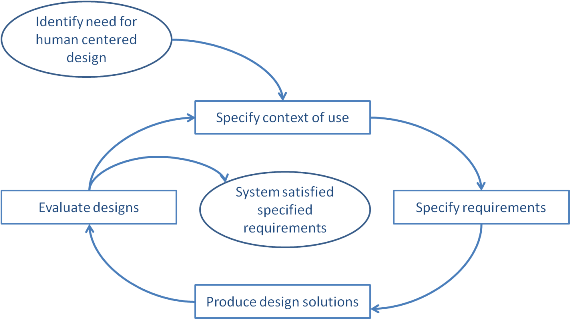What is user-centered design (UCD)?
User-centered design (UCD) is a type of user interface design and a process where the end-user’s needs, wants and limitations are a focus at all stages within the design process and development lifecycle.
The international standard ISO 13407 states: “Human-centred design is an approach to interactive system development that focuses specifically on making systems usable. It is a multi-disciplinary activity.”
In this model, once the need to use a human centered design process has been identified, four activities form the main cycle of work:

- Specify the context of use :
Identify the people who will use the product, what they will use it for, and under what conditions they will use it. - Specify requirements :
Identify any business requirements or user goals that must be met for the product to be successful. - Produce design solutions :
This part of the process may be done in stages, building from a rough concept to a complete design. - Evaluate designs :
The most important part of this process is that evaluation – ideally through usability testing with actual users – is as integral as quality testing is to good software development.
The goal of UCD is to produce products that have a high degree of usability.
User-centered design may also be called usability engineering.

